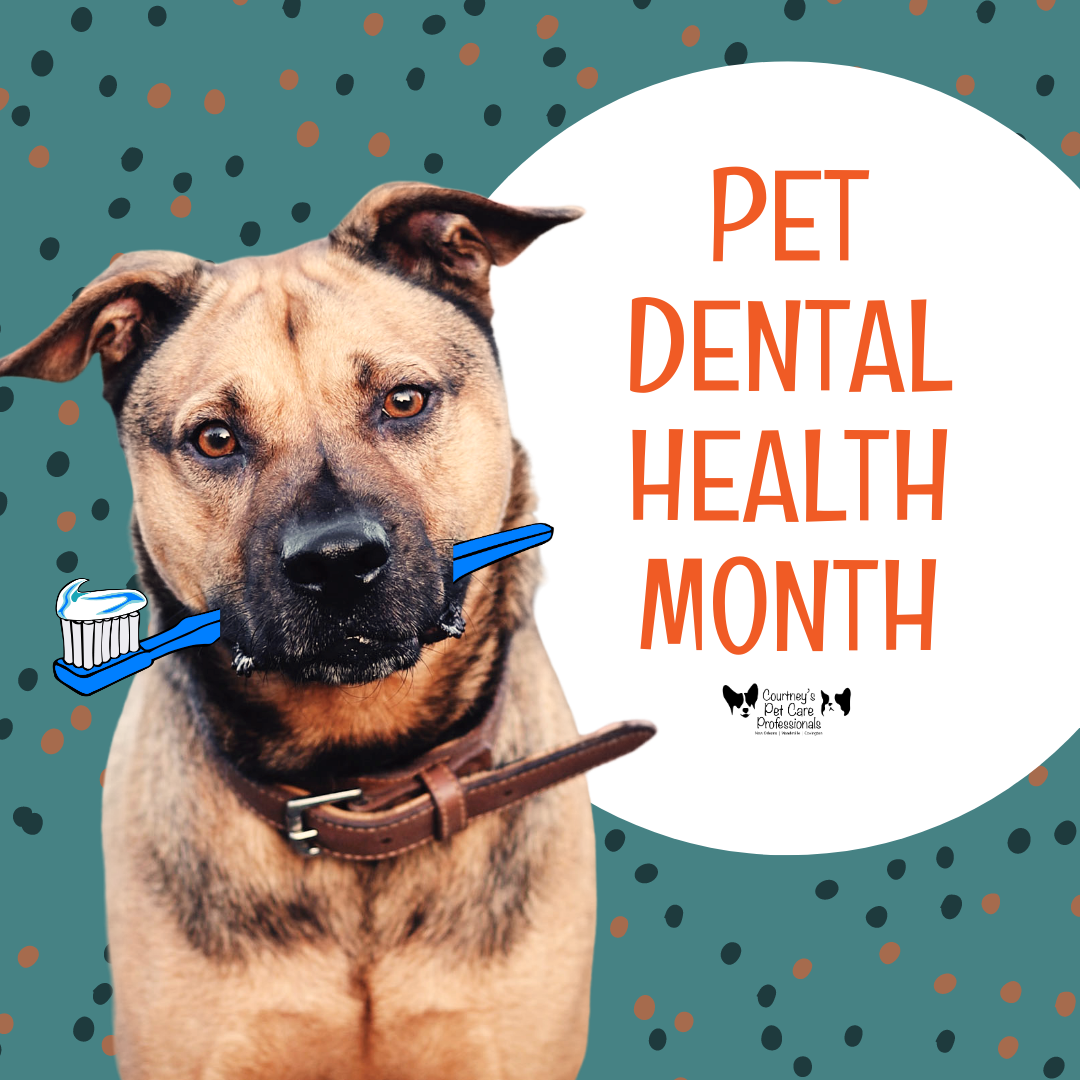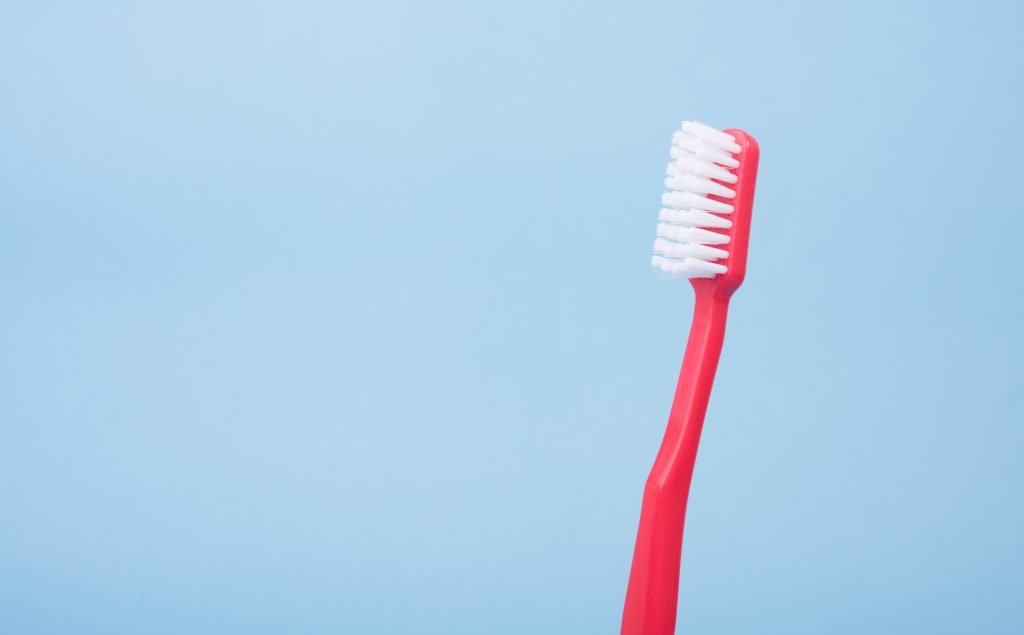
How to Brush Your Dog’s Teeth
- by cpc_admin
Often overlooked, dental health is important to your dog’s overall well being. Cavities or other dental issues can cause pain for your pet, causing them to eat less and even be less active. Their dental health can also be an indicator of underlying health problems. Dental health should be taken seriously just like all other aspects of your pet’s healthcare and your vet should be checking inside your dog’s mouth during their routine visits. It is important to understand why you should brush your dog’s teeth, how to brush them, and learn about the importance of regular dental cleanings from a vet.
Maintaining good dental hygiene for dogs is just one extra thing that you can do in your efforts to keep them healthy. Keeping your dog’s teeth in good condition will prevent bad breath, tartar or plaque buildup, cavities, and periodontal disease. Did you know that regular brushing can help prevent things like arthritis and heart disease? Tartar and plaque buildup begins in the mouth but can actually travel to other parts of the body and cause dangerous blockages. Just like with humans, regular brushing stimulates the gum line, which can keep teeth healthy and strong. Just like plaque and tartar can travel to other parts of their body, bacteria and other diseases in your pet’s mouth can be absorbed into the bloodstream to cause damage to the heart, kidneys, and liver. This shows that while brushing your dog’s teeth can seem frivolous to some, it is a simple routine that can help prolong your dog’s life.
Brushing your dog’s teeth can be a daunting task at first, it will take a lot of practice and consistency for your dog to learn to be comfortable with this practice. To start, you will need to get a dog-friendly toothpaste. Your vet can recommend a reputable brand for you and there are several options to choose from when shopping online or at your favorite pet store. You will also need a toothbrush designed for dogs. These will often come in a package with the toothpaste, but there are a few different styles. You might have to try a few options to find what works best for you and your dog. Once you have the necessary supplies, it is time to help your dog become more comfortable with the process. The most important thing to remember is to not force your dog into this process. To build a long-lasting habig, you must be patient and let your dog get used to the toothpaste, the toothbrush, and just the general process. This can take weeks or months to get into a good routine.

Here are a few steps to follow:
- Start by using your finger or a cloth to rub the outside of your dog’s teeth Be careful not to rub the inside of your dog’s teeth, as he or she coil accidentally bite down on your finger or hand. Once your dog has become comfortable with this, add a little bit of toothpaste to your finger or cloth and repeat it. It can take a few days for your dog to adjust to this.
- After your dog is comfortable with you using a finger or a cloth to wipe their teeth, you can introduce them to the toothbrush. Remember to go slowly when using the toothbrush. It is easy to accidentally bump the gums incorrectly and cause irritation. Use gentle, short strokes until you and your dog are more comfortable with it.
- Next, you will get your dog used to the taste of the toothpaste. You can start by putting a tiny bit on your finger to let them lick it off, or putting a small amount on the toothbrush and just letting them smell or lick it if they would like.
- Apply a small amount of toothpaste to the toothbrush. Gently lift the lip on one side of their mouth. You’ll want to focus on their cheeks and eventually get to their back teeth as well, as they allow it. Be patient, as this can take days or even weeks before your dog is more tolerant of this part. Being calm and quiet will help create a positive association with having their teeth brushed.
- Brush each side for approximately 30 seconds. Do not worry about getting the inside of their teeth. This part will come later when your dog is more comfortable. This could even take months.
- Once completed, reward your dog with a treat or extra praise. This will help create a positive association with getting their teeth brushed.
- Because dog’s mouths contain a lot of bacteria, it is important to make sure you rinse the toothbrush completely when you are finished. If you have multiple dogs, use a separate toothbrush for each one, as to not cross-contaminate.
Make sure you are following veterinarian recommendations for getting your dog’s teeth cleaned, even if you are diligent about brushing their teeth. Your vet will be able to monitor the overall health of your pet’s teeth if they are able to examine them regularly. Your vet will also be able to look for signs of other health issues, as dental problems can be signs of underlying conditions. They can monitor for chipped or cracked teeth, especially as your pup ages. By catching these issues early, they can prevent further damage and put a stop to pain your dog might be feeling. Veterinarians also are able to do more thorough cleans than we are able to do for our pets. Typically they will put your dog under anesthesia, so they are able to access all parts of their mouth without hurting or putting stress on your dog. They may take x-rays or run other tests to see if teeth are damaged beyond what we see.

Whether you are just learning about the importance of brushing your dog’s teeth, or you are trying to get into a good habit you can always reach out to your veterinarian for advice on the best products and techniques. Maintaining dental health for your pet should be prioritized just as much as healthy eating, exercising, and staying vaccinated. We encourage you to continue educating yourself on why it is important to brush your dog’s teeth. The best steps to take when helping your dog become comfortable with the process and to discuss regular dental cleanings with your veterinarian to keep your dog happy and healthy.
Often overlooked, dental health is important to your dog’s overall well being. Cavities or other dental issues can cause pain for your pet, causing them to eat less and even be less active. Their dental health can also be an indicator of underlying health problems. Dental health should be taken seriously just like all other…